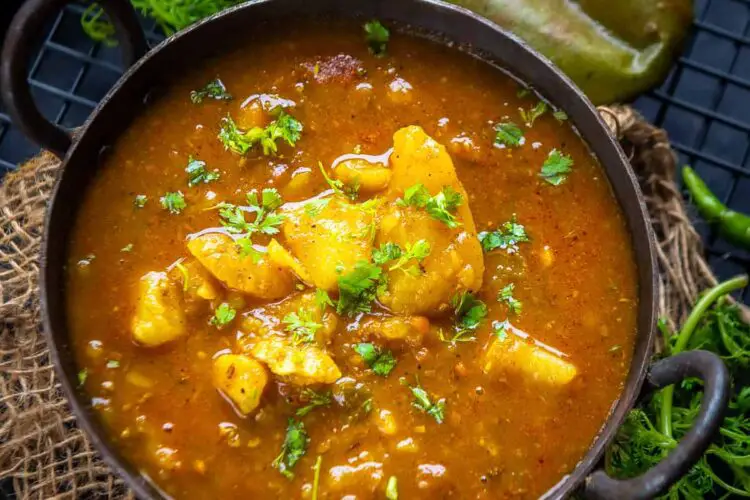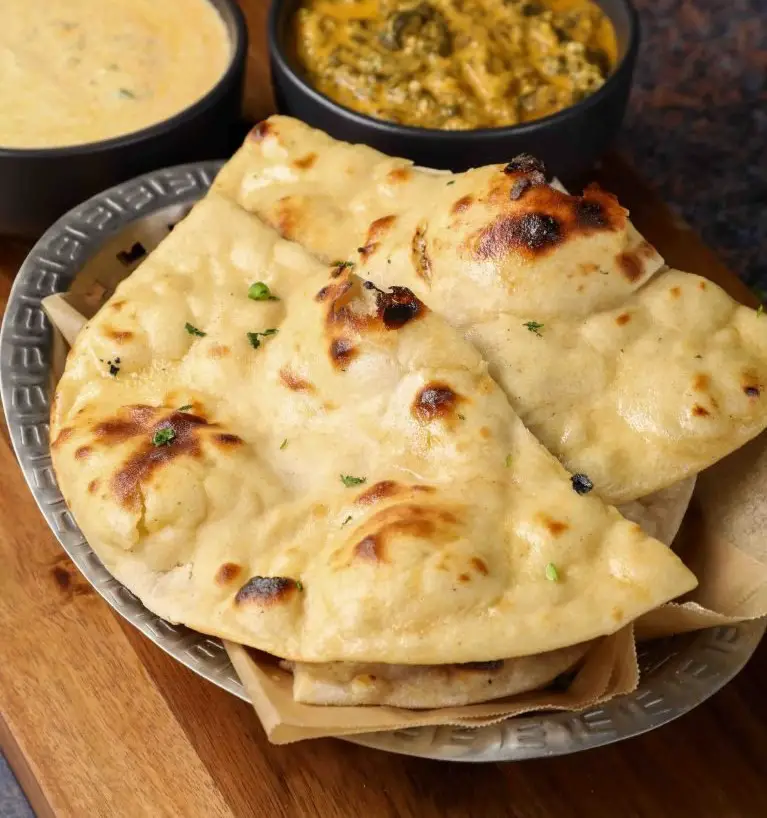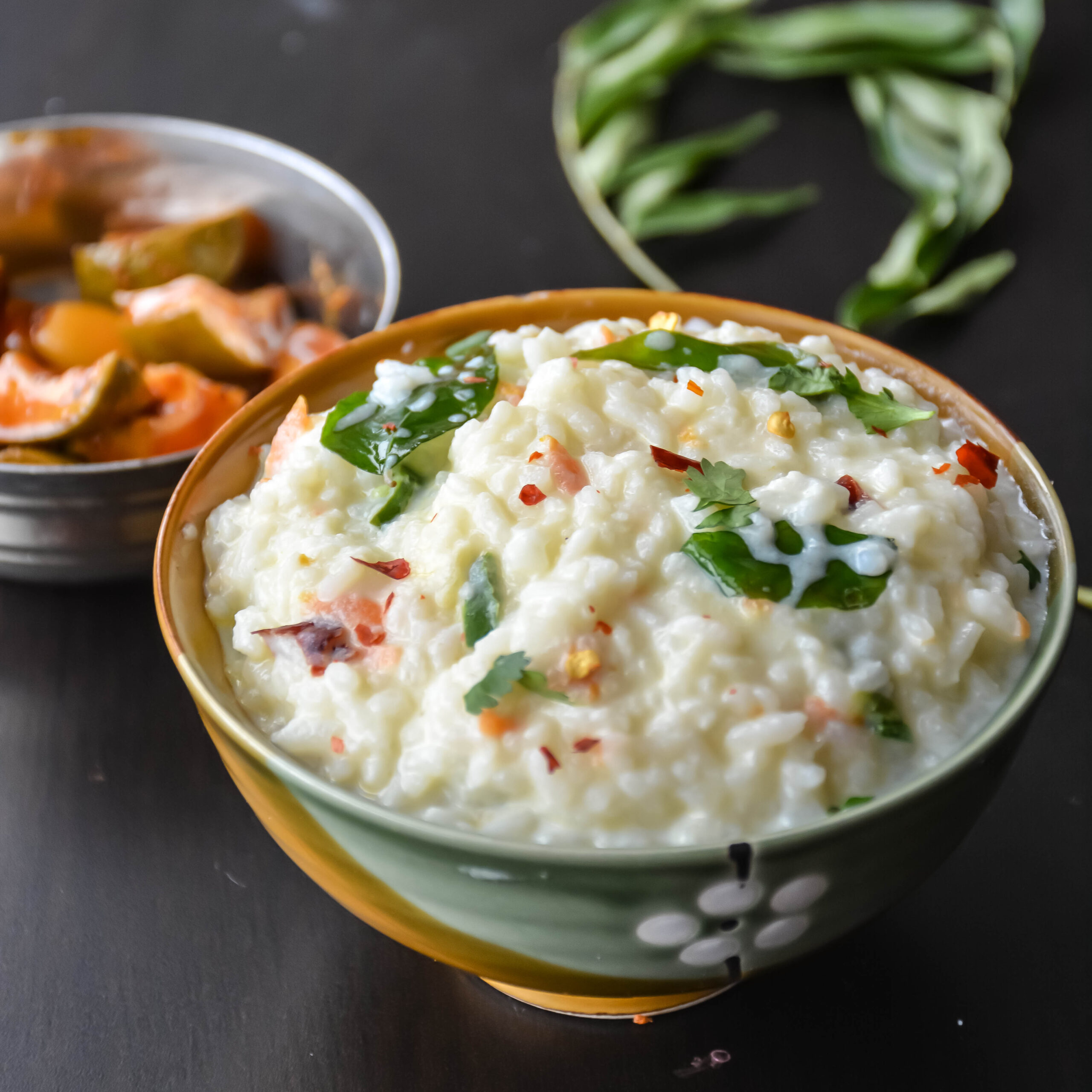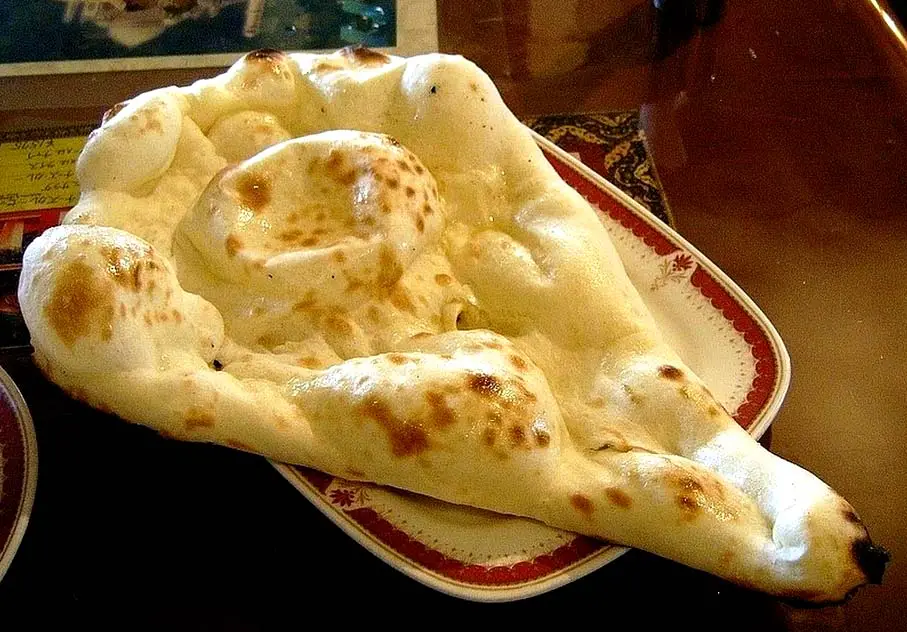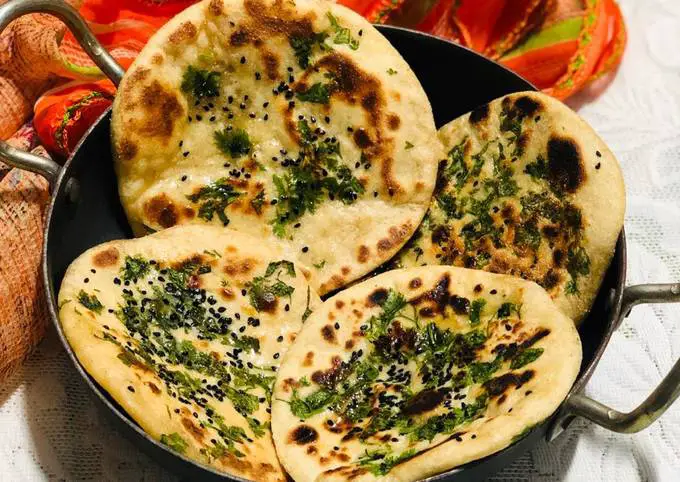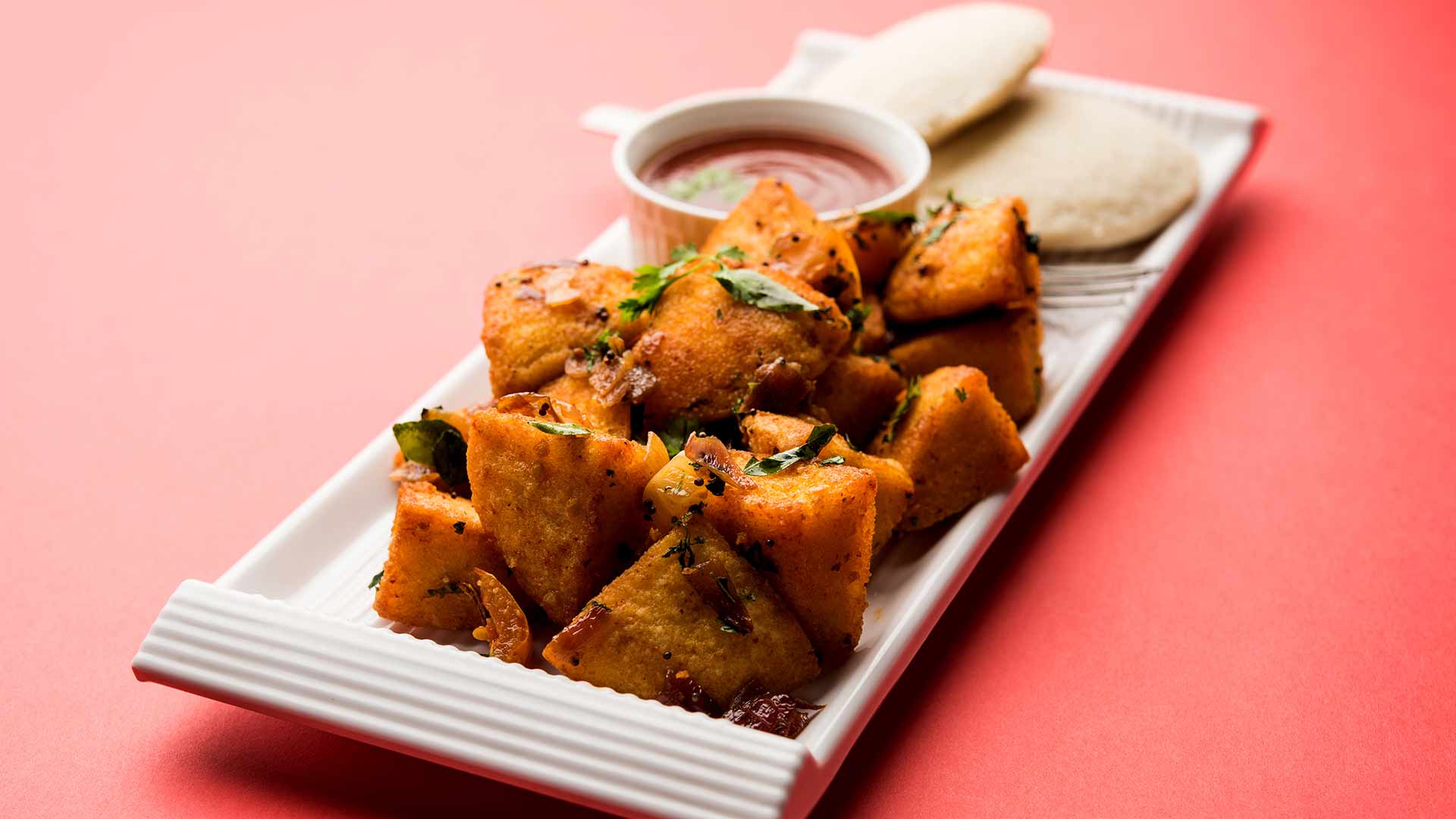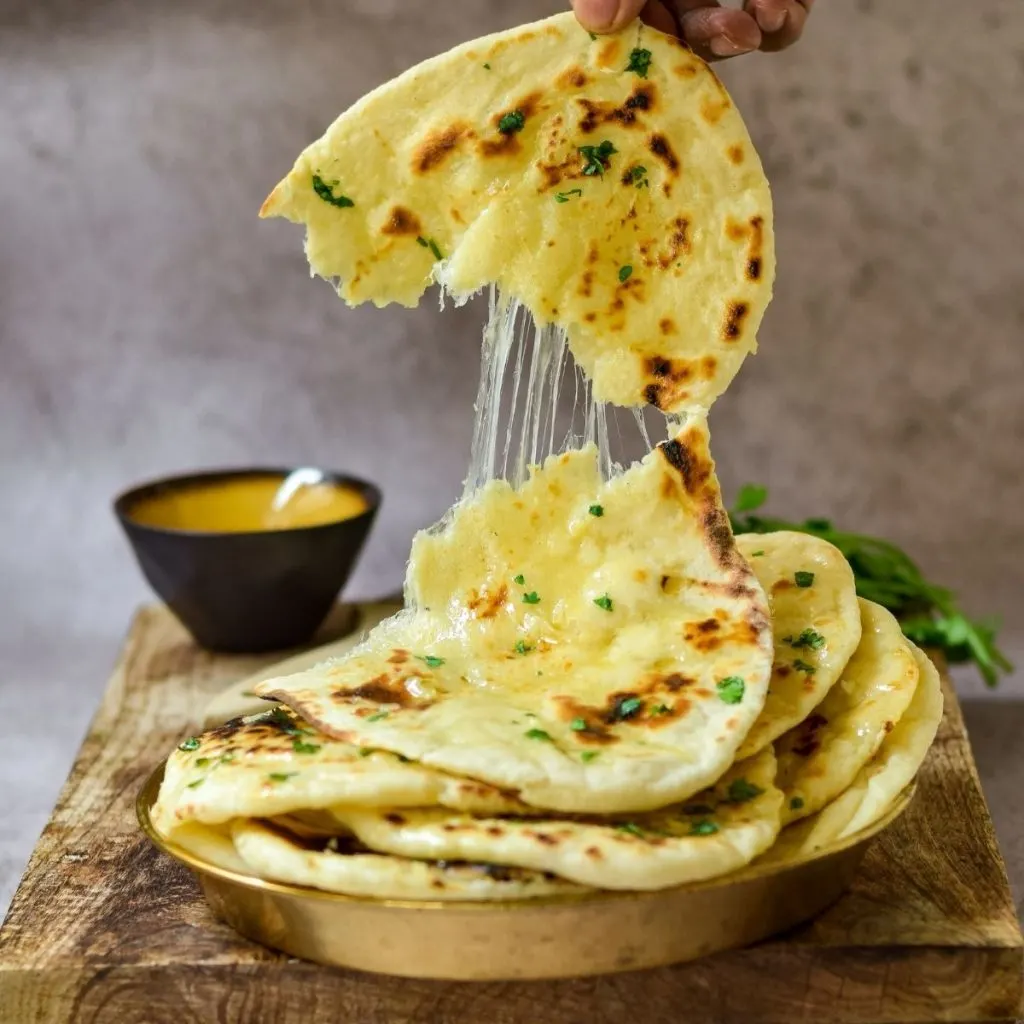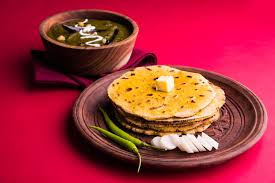Aloo ki sabji, also known as potato curry, hails from the heart of India, where spices and culinary traditions have thrived for centuries. Its roots can be traced back to the northern regions of India, where potatoes have been a dietary staple for generations. This humble yet exquisite dish has earned its place on the tables of both home cooks and renowned chefs, thanks to its versatility and deliciousness.
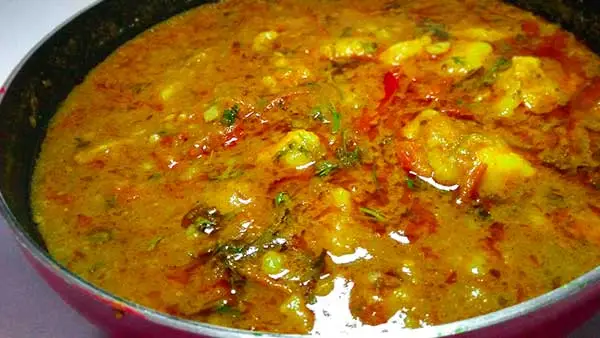
Ingredients:
- 4 medium-sized potatoes, peeled and diced into cubes
- 2 tablespoons cooking oil (vegetable or mustard oil)
- 1 teaspoon cumin seeds
- 1 teaspoon mustard seeds
- 1 teaspoon turmeric powder
- 1 teaspoon red chili powder (adjust to your spice preference)
- 1 teaspoon coriander powder
- 1/2 teaspoon garam masala
- 1 large onion, finely chopped
- 2 cloves of garlic, minced
- 1-inch piece of ginger, minced
- 2 ripe tomatoes, finely chopped or 1/2 cup tomato puree
- Salt to taste
- Fresh coriander leaves for garnish
- Water as needed
Instructions:
- Heat the cooking oil in a pan or kadai over medium heat.
- Add cumin seeds and mustard seeds to the hot oil. Allow them to sizzle and release their aroma.
- Add the finely chopped onions and sauté until they turn golden brown, usually for about 5-7 minutes.
- Stir in the minced garlic and ginger. Continue to sauté for another 2 minutes until the raw smell disappears.
- Add the dry spices: turmeric powder, red chili powder, coriander powder, and a pinch of garam masala. Stir well to combine and let them cook for a minute until fragrant.
- Now, add the finely chopped tomatoes or tomato puree. Cook and stir until the tomatoes break down and the oil starts to separate from the masala. This usually takes about 5-7 minutes.
- Add the diced potatoes to the masala. Stir them well, ensuring they are coated with the aromatic mixture.
- Pour in enough water to cover the potatoes. Season with salt according to your taste. Stir everything together.
- Cover the pan with a lid and let the curry simmer on low to medium heat. Stir occasionally to prevent sticking, and check the potatoes for tenderness. It usually takes around 15-20 minutes for the potatoes to become tender.
- Once the potatoes are cooked through and the curry has thickened to your desired consistency, remove them from the heat.
- Garnish the Aloo Ki Sabji with fresh coriander leaves.
Tips and variation
- Choose waxy potatoes like Yukon Gold or red potatoes for Aloo Ki Sabji. They hold their shape well during cooking.
- Adjust the amount of red chili powder to suit your spice preference. If you like it spicy, add more; for a milder flavor, reduce the amount.
- Finely chop the onions, garlic, and ginger to ensure they blend seamlessly into the curry, providing depth of flavor.
- Use ripe tomatoes for the best flavor. Alternatively, you can use tomato puree for a smoother texture.
- Opt for cooking oil with a high smoke point, such as vegetable or mustard oil, for sautéing the spices and aromatics.
- Covering the pan while simmering helps the potatoes cook evenly and absorb the flavors of the spices and tomatoes.
Variations:
- Dum Aloo: For a rich and creamy version, try Dum Aloo. This variation features potatoes simmered in a luscious tomato and cashew nut gravy. It’s perfect for special occasions and celebrations.
- Aloo Gobi: Aloo Gobi combines potatoes and cauliflower in a spicy curry. The cauliflower adds a delightful crunch to the dish, complementing the softness of the potatoes.
- Jeera Aloo: Jeera Aloo is a simple yet delicious variation that focuses on the earthy flavor of cumin seeds. It’s quick to prepare and makes for a fantastic side dish.
- Green Peas: You can add a cup of green peas to the Aloo Ki Sabji for extra color and flavor. Just toss them in when you add the potatoes.
- Paneer Aloo: To make it more substantial, add cubes of paneer (Indian cottage cheese) along with the potatoes. This creates a creamy and protein-rich curry.
- Spinach Aloo: Enhance the nutritional value by adding chopped spinach or other leafy greens to the curry during the last few minutes of cooking. It adds a fresh twist to the classic recipe.
FAQs
Q: Can I use other vegetables in Aloo Ki Sabji?
A: Absolutely! While the classic version features potatoes, you can customize it by adding other vegetables like cauliflower (Aloo Gobi), green peas, or even paneer (cottage cheese) to create variations of this dish.
Q: How do I make Aloo Ki Sabji less spicy?
A: To reduce the spiciness, you can use less red chili powder or opt for a milder variety. Additionally, adding a splash of yogurt or coconut milk to the curry can help balance the heat.
Q: Can I make Aloo Ki Sabji ahead of time?
A: Yes, you can make Aloo Ki Sabji ahead of time and store it in an airtight container in the refrigerator for up to 2-3 days. Reheat it gently on the stovetop or in the microwave before serving.
Q: What should I serve with Aloo Ki Sabji?
A: Aloo Ki Sabji pairs wonderfully with steamed rice, naan, roti, or paratha. It’s also great as a side dish with other Indian main courses.
Q: How can I make Aloo Ki Sabji more nutritious?
A: To boost the nutrition of Aloo Ki Sabji, consider adding vegetables like spinach or peas. You can also incorporate tofu or paneer for added protein.
Q: What makes Aloo Ki Sabji so flavorful?
A: Aloo Ki Sabji gets its rich flavor from a combination of spices, including cumin seeds, mustard seeds, turmeric, red chili powder, coriander powder, and garam masala. The sautéed onions, garlic, and ginger also contribute to its aromatic profile.
Q: Can I adjust the thickness of the gravy in Aloo Ki Sabji?
A: Yes, you can adjust the thickness of the gravy by controlling the amount of water you add during cooking. If you prefer a thicker consistency, add less water, and for a thinner gravy, add more water.
In Conclusion
Aloo ki sabji, the beloved Indian potato curry, has rightfully earned its place as a culinary masterpiece. Its rich history, flavorful ingredients, and versatility make it a favorite in households and restaurants around the world. By following the steps and variations outlined in this guide, you’ll be well on your way to mastering this classic dish. So, roll up your sleeves, gather your ingredients, and savor the delightful journey of cooking aloo ki sabji for yourself and your loved ones.
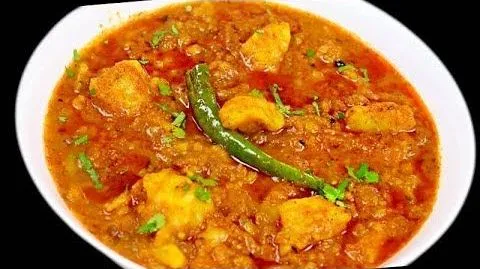
Nutrition
| Calories | 82 kcal |
| Fat | 5 g |
| Carbohydrates | 60 g |
| Sodium | 139 mg |
| Potassium | 7 mg |
| Protein | 1 g |
| Vitamin A | 25 IU |
| Calcium | 15 mg |
| Vitamin C | 0.1 mg |
| Iron | 0.5 mg |
Aloo ki sabji : A Delicious Indian Potato Curry
Recommended Products
As an Amazon Associate and member of other affiliate programs, I earn from qualifying purchases.
- Methi Matar Malai recipe
- How to make chenna
- Handi Paneer Recipe
- ‘Black Lentils Recipe
- Til laddu recipe (til ke laddu)

